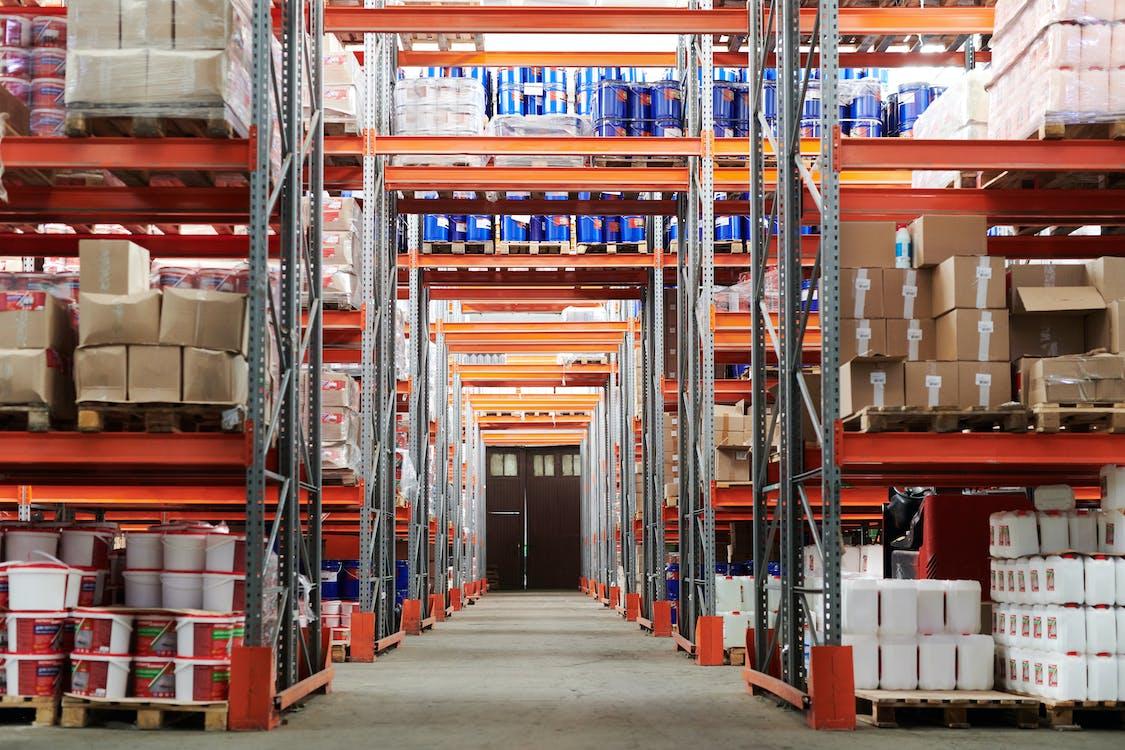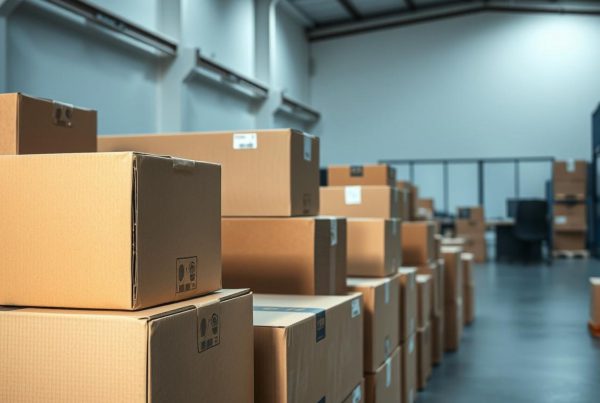Did you know one of the most significant behavioral adjustments due to the outbreak—at least from a commercial standpoint—has been the rapid integration of e-commerce into customers’ daily lives? After the horrifying first few episodes of COVID-19, the e-commerce industry became a standard norm. While more and more individuals continue to return to their everyday lives, e-commerce isn’t going away anytime soon. In fact, it’s likely to become even more popular in the coming years.
Although setting up an internet business was a time-consuming and frustrating process back in the day, the times have changed. It has never been simpler to start an e-commerce business from scratch than it is right now. And with simplicity comes sustainability, which may leave many individuals to wonder how e-commerce looked 25 years back and how it evolved towards sustainable packaging.
Below we’ll discuss how product packaging gained momentum and has evolved in the last 25 years, followed by the history of packaging and why today’s options are better than ever. But before getting to the nitty-gritty of sustainable e-commerce packaging, let’s look at the evolution of the e-commerce industry in 25 years as it moved toward eco-friendly, sustainable packaging.
Evolution of the E-Commerce Industry – From Early Days to Sustainable Packaging
The Boxery is a prominent leader in the packaging industry, providing packaging solutions for several e-commerce businesses in the United States. Along the way, we picked up some valuable knowledge about the e-commerce business sector, which is why we’ll discuss how the gigantic e-commerce industry and its associated packaging have evolved over time.
In 2017, e-commerce sales generated over $453.46 billion in revenue in the United States; however, it is predicted that by 2025, the market will reach approximately $8.8 trillion globally. Currently, Amazon dominates the e-commerce world (at least in the US, there are some major competitors worldwide). Nevertheless, Jeff Bezos’s mammoth didn’t kick off online shopping’s long and eventful history. To trace the roots of electronic trade, we need to look further back.
Was Marijuana the First E-Commerce Transaction?
In 1972, researchers at Stanford University traded a small amount of marijuana with some colleagues at the Massachusetts Institute of Technology (MIT)—almost four decades before Amazon or other similar corporations existed. We don’t have information on how the dime bag was wrapped or delivered, but we highly doubt that it was anything that resembles the current cannabis or e-commerce packaging.
Communication over the then-nascent “Internet” (it hadn’t yet been given that appellation) was restricted to research centers, universities, and military sites back in those days. When it first became available, the World Wide Web was largely used to transmit research data. Since then, the internet has seen a clear transformation. Let’s dig deeper into the phenomenon of online transactions.
TV and Telephone – The First E-Commerce Computer
E-commerce customers are spoilt for choice these days with the abundance of products available for purchase, while businesses are relieved by the many components available for packaging, including bubble bags, industrial peanuts, corrugated boxes, tapes, shipping foams, packing protection, and many more. However, there were not nearly as many options in the beginning.
Michael Aldrich, an English inventor, innovator, and entrepreneur, established the first system for electronic commerce in 1980, which was based on a TV and phone network. The so-called teleputer that Aldrich developed made it possible to conduct straightforward online business operations. The Boston Computer Exchange was established two years later, in 1982. Industry professionals widely regard the Boston Computer Exchange as the forerunner of the contemporary e-commerce business.
The Boston Computer Exchange eventually adapted to buying and selling various goods. Despite this, the average individual had a very limited understanding of online business. Even the packaging industry hadn’t developed enough to accommodate e-commerce yet, so the pioneering businesses conducting their online operations depended heavily on conventional packaging options. However, there was a shift on the horizon for packaging companies as well as the World Wide Web.
The Internet Takes the World by Storm
The public was first able to use the internet in 1991. Formerly, it was a device only used by scholars, intellectuals, the military, and a few other selected individuals, but nobody knew it would eventually become an integral part of everyday life. Initially, the internet didn’t burst onto the scene significantly; many individuals were still adjusting to computers, much less the World Wide Web.
As soon as the National Science Foundation removed limitations and made the internet available to the general public through the World Wide Web browser, individuals could finally connect their personal computers at home to the internet. This was the time when the World Wide Web saw rapid expansion. By 1995, more than 180,000 different domain names had been registered. By 1998? Over 2 million! Approximately 350 million domain names have been registered as of now.
The advent of the internet significantly influenced not just the technology and retail industries but also the packaging sector. Customers could now purchase more conveniently from the comfort of their homes—thanks to the internet. Rather than rushing to the brick-and-mortar stores, they may go to an online website, place the order, and then wait for it to be delivered through courier service.
With the evolution of online shopping, e-commerce packaging was necessary for most of the items delivered and was often provided by packaging companies. Since then, packaging methods have been made to accommodate the e-commerce industry better. Products sold via mail order were often well-made, and shipping wasn’t as much of an issue as it was now fifty years ago.
The Rise of Amazon
Only a few companies have influenced e-commerce and the Internet sector, like Amazon. Established in 1994, the company’s primary emphasis was on books. It is quite possible that Amazon was, in fact, the biggest bookshop in the entire world at that time. Since Amazon could store books in a warehouse rather than a storefront, the company had a larger stock than a conventional bookshop.
Amazon chose books partly because they were simple to pack and transport. Because of their often compact size and sturdiness, books are well-suited for shipment. Regarding the book’s packing, all necessary was a simple corrugated box; however, the company could also add bubble wrap, packaging peanuts, or shipping foams to keep the book from shifting about while it was in transit.
Moving forward, Amazon developed rapidly and sold CDs, films, and other items almost immediately. The company originally focused on items that were simple to ship and that consumers felt safe purchasing without first seeing, but over time, the business steadily expanded its product portfolio to include more and more options (and, thus, environmentally-friendly packaging needs).
Amazon is known as an “A to Z” merchant since it now offers almost everything—you name anything, and it’s probably on its way somewhere. Additionally, it is one of the most significant purchasers of corrugated boxes. If you stroll along a residential neighborhood, you will likely come across several shipment boxes with the Amazon name displayed on front porches.
E-Commerce Explodes, Reshapes Packaging Industry
In 1999, Time magazine largely honored Founder, Executive Chairman, and Former President and CEO of Amazon, Jeff Bezos, Person of the Year, for his role in popularizing online shopping and drawing attention to the significance of the technological revolution. Both brick-and-mortar and packaging businesses have been shaken by the rise of Amazon and other e-commerce giants.
Forty years ago, there was no such thing as e-commerce packaging. Indeed, there were still options for packing, and many online retailers employ tried-and-true methods like corrugated boxes, which are still in demand. The evolution of e-commerce has also increased demand for certain types of packaging, such as bubble wrap mailers. Mailing tiny items safely and securely is a breeze with a bubble wrap mailer, which is just an envelope packed with bubble wrap to prevent damage.
Plastics, especially those designed for single use, are under fire these days, and other materials will be scrutinized and eventually phased out in the same way. Currently, Amazon is making the switch to more malleable plastic. Increasing usage of bioplastics and EPS alternatives is expected as new materials are developed to replace less environmentally friendly, sustainable solutions.
Once upon a time, shopping malls were the beating hearts of American culture (at least as far as shopping was concerned). Compared to total retail sales, e-commerce made up just 5.1 percent of all activity in 2007. However, in 2019, e-commerce contributed 16 percent of all retail sales, up from 14.4 percent in the previous year. As of 2022, the market share of online retailers is only going up. And as it does, demand for e-commerce packaging solutions will continue to grow and evolve.
Recycled Fiber: Present and the Future of E-Commerce Packaging
Looking at the larger picture and working for systemic change is more crucial than ever as the e-commerce packaging sector develops and adapts to social changes. Everyone knows where to deposit their old paper, plastic, and metal containers. However, e-commerce businesses only realize the importance of investing in eco-friendly packaging products made from 80-100% recycled materials. Nevertheless, this is where the use of packaging made from recycled fiber comes into play.
Recovery of paper from MRFs is the first step in the circular journey of recycled fiber packaging, which continues with the development of post-consumer recycled fiber. The resulting fiber is cleaned before being repurposed into consumer goods. Case in point: instead of sitting in a landfill and deteriorating, the fibers are separated, recycled, and converted into new corrugated boxes.
On average, recycling mills process 2.2 million pounds of paper waste daily, producing over 230,000 tons of post-consumer recycled fiber. On the other hand, some mills employ this recovered fiber to produce all sorts of paper and paperboard products and disposable paper products, including cups, boxes, and food containers. A greater rate of recycled materials may benefit the planet, which is why The Boxery products have less carbon impact than virgin (non-recycled) fiber.
Through a trial program, coffee giant Starbucks successfully recycled 25 million paper cups, while McDonald’s, the biggest restaurant chain in the world, said to use only consumer packaging derived from renewable, recycled, or certified sources by 2020 (already in effect). The Boxery has also begun using recycled materials to help businesses attract today’s environmentally concerned customers.
When it comes to the circular economy, Amazon is not the only company that has to be concerned about the ever-increasing desire for solutions that produce little to no waste. When working to optimize your packaging, sustainability and environmental concerns are extremely important factors to keep in mind. As we move forward, the environmental effect will be a key focus and worry for the always-developing conscientious customer base and their rising involvement with online shopping.
To conclude, the future will need packaging solutions that are agile, holistic, and circular—the ones that can easily fix the pain points closer to the source. There is no one design, material, or method that will be able to address all problems, but manufacturers like The Boxery, who use a mix of inventions, supply chain knowledge, and tools, will be able to guarantee an appropriate solution.
Why Does Sustainable E-Commerce Packaging Matter?
Gone are the days of packaging made from recycled paper and marketed as “beneficial to the environment.” Today, sustainable packaging solutions refer to much more than just that, and they may encompass everything from the procurement of raw materials to the design of the appropriate size, the volumetric size while in transportation, and the ease with which it can be recycled.
In addition to the most prominent benefit of being better for the environment, sustainable packaging may offer customers an improved experience, reduce costs, CO2 emissions, and energy consumption, and improve overall business performance. When it comes to picking a sustainable, environmentally-friendly packaging option like corrugated boxes, there are, in fact, no drawbacks, just positives.
You could believe that all packaging companies have the potential to create a significant difference on their own, but as was said previously, the design stage is responsible for eighty percent of the environmental effects. This indicates that the key to achieving sustainability is not just a shift in mentality on how to design packaging but also in the numbers, since the cumulative effect of many individuals making small changes today will result in significant improvements tomorrow.
Corrugated Boxes – The Backbone of E-Commerce Packaging
Due to customers’ increased dependence on e-commerce, the need to implement full-fledged omnichannel marketing strategies skyrocketed in 2022. Millions of customers who were already acquainted with online shopping expanded their use, while some tried it for the first time to overcome the COVID-19 pandemic’s limitations to everyday items, such as groceries.
Nevertheless, 2020 necessitated a quick acceleration in implementing new packaging solutions, and the most prominent among them were corrugated boxes. Simply stated, these boxes were recognized as the backbone of the American supply chain, and the industry has been kept on its toes by the rapid change to e-commerce. Products are being delivered in much smaller quantities to final destinations.
Over the last ten years, the recycling rate for corrugated cardboard boxes has been higher than that of any other packaging material, reaching over 90 percent. These environmentally friendly, recycled, and sustainable boxes are then utilized to manufacture new boxes, which are required to keep the supply chain operations running. On average, boxes are made up of fifty percent recycled material.
Final Thoughts
According to market analysis, the overall volume of sustainable e-commerce packaging was approximately $32.9 billion in 2018, up from $28.2 billion in 2017. As we go into the future of sustainable packaging, several studies indicate that the global demand for environmentally friendly materials like corrugated boxes will nearly quadruple over the next five years, reaching $63.3 billion.
The requirements and expectations of environmentally conscious customers have already begun to extend beyond those of structural design and print, shifting toward a greater focus on materials, supply chain testing, sustainability, and circularity. Even though packaging materials have developed significantly over the course of the previous 25 years and even more quickly in the past five years, there are no indicators that innovation will soon slow down—at least for a decade.





Recent Comments